Vernon: Pro Summer Pruning for Stunning Garden Results
Ready to transform your garden? Get a personalized quote today!
Request a QuoteQuick Guide to Summer Pruning
- Summer pruning removes dead/diseased wood, manages size, improves air circulation, and can boost flowers/fruit.
- Prune spring-flowering shrubs (Lilacs, Forsythia) right after blooms fade (early June).
- Lightly shape summer bloomers and hedges in mid-summer (June-July).
- Deadhead perennials continuously to encourage more flowers.
- Avoid heavy pruning late summer (mid-August onwards) and avoid pruning Oaks/Elms in summer.
- Use clean, sharp tools: bypass pruners, loppers, saw.
Introduction: Summer Sunshine & Sharp Shears – Why Vernon Needs Pro Pruning
Ah, glorious Ottawa summer! Finally, time for patios, maybe a dip in the pool, and enjoying every bit of sunshine. If you’re soaking it up in your beautiful Vernon yard, you know how special this season is. You’ve probably got the lawn mower humming and the flower beds looking colourful. But while you’re relaxing, your garden might be getting a little too enthusiastic with all that growth.
That’s where summer pruning comes in – time to grab those sharp shears! Yes, pruning isn’t just a task for the cooler months before spring growth. Getting hands-on with your shrubs and certain trees during the summer is a key landscaping and gardening job that many people overlook. It might seem strange to cut back plants when they’re actively growing, but trust us, it’s important!
Why bother braving the sun (and maybe a few mosquitoes) with clippers? Proper summer pruning offers fantastic benefits:
- It keeps your plants healthy by removing dead, damaged, or diseased branches.
- It helps manage size and shape, preventing your beloved bushes from staging a hostile takeover of your walkway. Hello, improved curb appeal!
- For some plants, it can encourage more flowers or even a better fruit yield later on.
- It improves air circulation within the plant, which can help prevent fungal issues – crucial in Ottawa’s humid summers. More info on local gardening resources can be found via the Master Gardeners of Ottawa-Carleton.
Think of it as a mid-season tune-up for your green friends, keeping your Vernon landscape looking its absolute best right through until fall. Stick around, and we’ll dive into exactly what needs attention this summer, when the best time is, and how to make those cuts confidently for a thriving garden. Need professional assistance? Explore our landscaping services.
Beyond Tidying Up: The Surprising Power of Summer Pruning
Okay, let’s move beyond just snipping stray twigs and dive into why summer pruning is like giving your plants a secret superpower boost! While grabbing the shears in the heat might feel like just another chore, it’s actually a crucial step for a truly thriving Ottawa garden. Think of it less as tidying up and more as strategic gardening intervention.
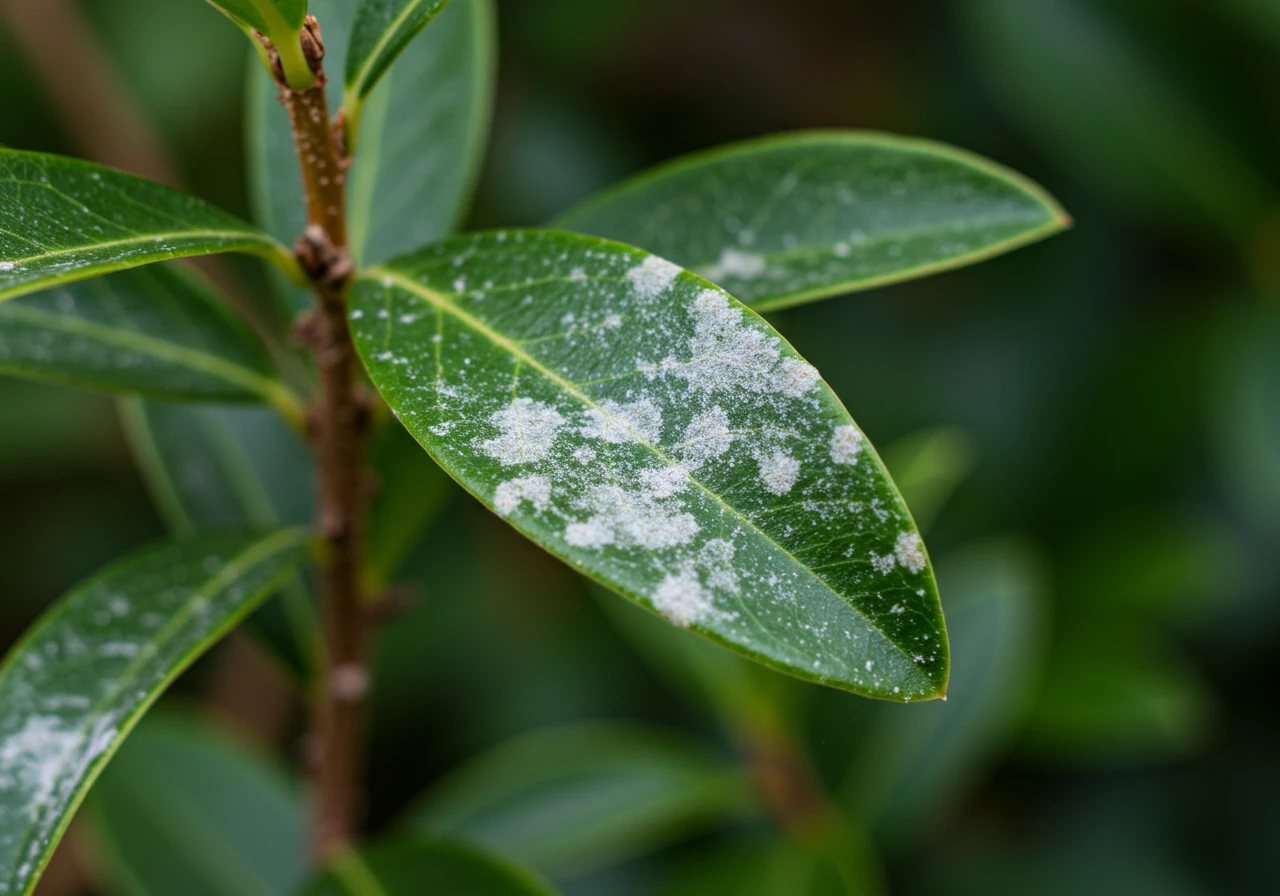
Healthy Plants are Happy Plants (Especially in Ottawa Humidity!)
First off, summer pruning is fantastic for plant health. Dormant pruning in late winter or early spring often focuses on major shaping and removing winter damage. Summer pruning, however, allows you to react immediately to problems that pop up during the growing season. See a branch that’s dead, damaged, or looks diseased? Snip it out right away! This stops problems like fungal spots or pests from spreading to the rest of the plant.
Speaking of fungus, Ottawa summers can get pretty humid, right? That damp air is like rolling out the welcome mat for powdery mildew and other fungal issues. Summer pruning helps by improving air circulation within the plant’s canopy. Thinning out dense growth allows air to move freely, drying leaves faster and making it harder for diseases to take hold. It’s a simple landscaping trick with big health benefits, especially if you’re working with plants that aren’t naturally suited to damp conditions. For plants that are better adapted, check out this guide on . Removing diseased parts promptly also reduces overall stress on the plant, helping it better withstand other challenges, kind of like how managing prepares plants for the cold.
Taming the Beast: Managing Growth and Shape
Let’s be honest, some plants grow with wild enthusiasm during the summer. That lilac might be trying to eat your fence, or your favourite shrub could be blocking the path again. This is especially true in established neighbourhoods like Nepean or Barrhaven where mature plants might need regular attention to keep them in bounds. Summer pruning is perfect for managing this vigorous growth. You can:
- Control the size and shape of shrubs and hedges.
- Remove aggressive water sprouts (those fast-growing vertical shoots) on trees like maples or fruit trees.
- Direct the plant’s energy towards producing stronger branches or more flowers/fruit, rather than just excessive leaves.
Keeping good notes is key here. Referencing your when deciding exactly how much to trim back based on past growth.
More Blooms, Better Fruit!
Want more flowers? Summer pruning can help! Deadheading, which is removing spent flowers, encourages many plants (like roses and some perennials) to produce another flush of blooms. For certain fruit trees (apples, pears), summer pruning after the fruit has set can expose the developing fruit to more sunlight, leading to better colour and potentially sweeter flavour. It helps the tree focus energy on ripening the existing fruit rather than growing more leaves.
Taking care of your garden involves many tasks throughout the season, much like how ensuring requires consistent effort. Summer pruning is just one vital piece of that overall landscape maintenance puzzle. Looking for examples of thriving landscapes? Visit our gallery!
So, you see? Summer pruning is way more than just a quick trim. It’s about actively boosting plant health, controlling enthusiastic growth, and even encouraging more beauty and bounty from your plants. If tackling dense shrubs or tricky tree branches feels overwhelming, remember that professional help is available. Our team offers expert pruning as part of our comprehensive Clean Yards landscaping and gardening services.
Timing is Everything: Your Ottawa Summer Pruning Calendar Guide
Okay, let’s talk timing! When it comes to summer pruning in the Ottawa area, getting the schedule right is almost as important as making the cut itself. Our relatively short growing season (hello, Zone 5a/b!) means plants need enough time to heal and harden off before winter arrives. Pruning too late in the summer can encourage tender new growth that gets zapped by the first frost. Nobody wants that! It’s like sending your plants out in a t-shirt just before a snowstorm. Whether you’re gardening in Greely or tending a landscape in Richmond, these timing tips apply.
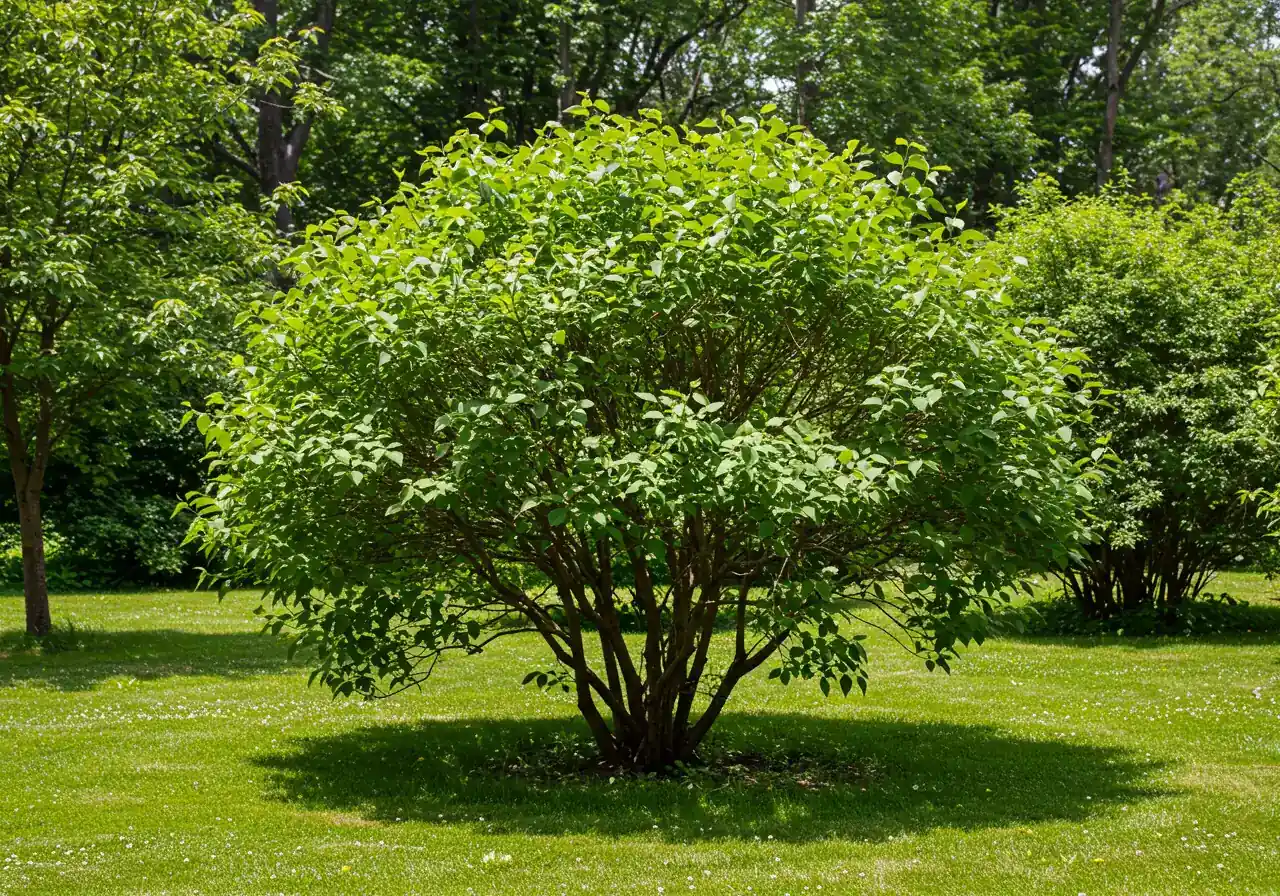
Think of your summer pruning tasks falling into a loose calendar:
Late Spring / Early Summer (Approx. June)
Prime time for spring-flowering shrubs (Lilacs, Forsythia, Weigela). Prune *immediately* after flowers fade to shape and encourage next year’s blooms.
Mid-Summer (Late June – July)
Light shaping for summer bloomers (Potentilla, Spirea). Minor shaping for evergreens. *Light* pruning on fruit trees (apples, pears) after fruit set. First major hedge trim. Deadhead perennials.
Late Summer (Early – Mid-August)
Final *light* hedge trim if needed. Caution Zone: Avoid significant pruning on most trees/shrubs from now on to allow hardening off before winter.
Throughout Summer
Continuously deadhead perennials. Remove suckers and water sprouts as soon as you see them.
Whoa There! Plants NOT to Prune Heavily in Summer:
Besides avoiding late-season cuts, there are a couple of big no-nos for summer pruning:
- Oaks and Elms: Pruning these trees during the summer months significantly increases their risk of contracting deadly diseases like Oak Wilt and Dutch Elm Disease, often spread by insects attracted to fresh wounds. Stick to dormant season pruning for these guys.
- Maples: While removing small water sprouts is okay, maples tend to “bleed” sap heavily if pruned significantly during the growing season. It’s usually not harmful, but it’s messy and best avoided.
Weather Watching: Try to avoid pruning during extreme heat waves or drought periods. Pruning adds stress to plants, and doing it when they’re already struggling with harsh weather isn’t ideal.
Keeping track of all this, plus mowing and other chores, can feel like a lot! Remember that consistent landscape maintenance is key to a beautiful yard. If you need a hand keeping everything on schedule, from pruning to regular expert lawn care services, we can help. Our team understands the specific timing needed for Ottawa gardens. We offer a range of Clean Yards landscaping and garden services, including targeted pruning and complete Vernon seasonal garden clean-up services to get things back in shape.
Have questions about a specific plant or wondering if professional help is the right choice for you? Don’t hesitate to contact Clean Yards today! We’re happy to chat about your garden’s needs. And rest assured, any information you share is handled according to our Clean Yards Privacy Policy. Check out our excellent reputation on Google!
Snip Snip Hooray! Summer Pruning Techniques for Ottawa Gardens
Okay, you know why and when to prune, so let’s roll up those sleeves and talk how. Don’t worry, this isn’t rocket science; it’s more like giving your plants a stylish summer haircut! Getting the technique right ensures your gardening efforts lead to happy, healthy plants.
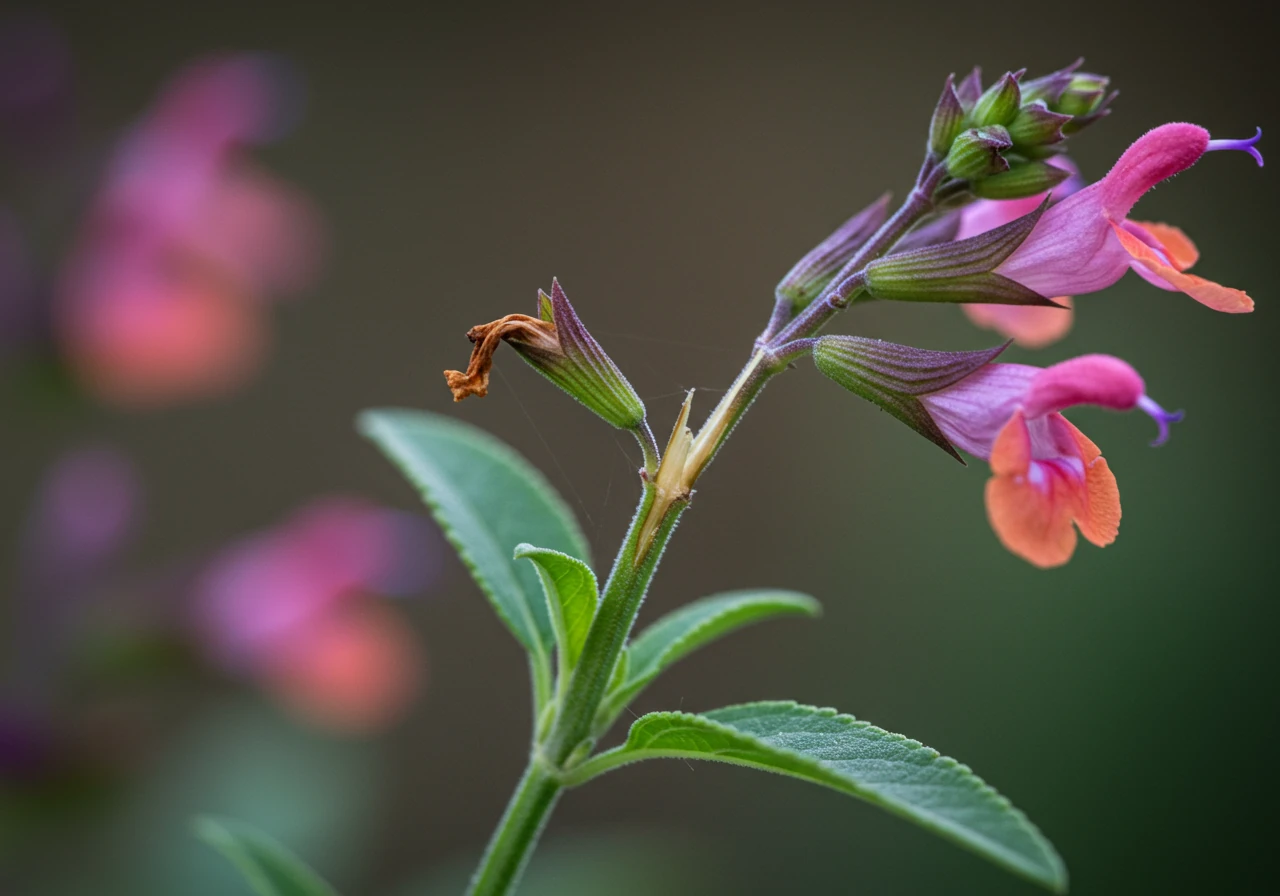
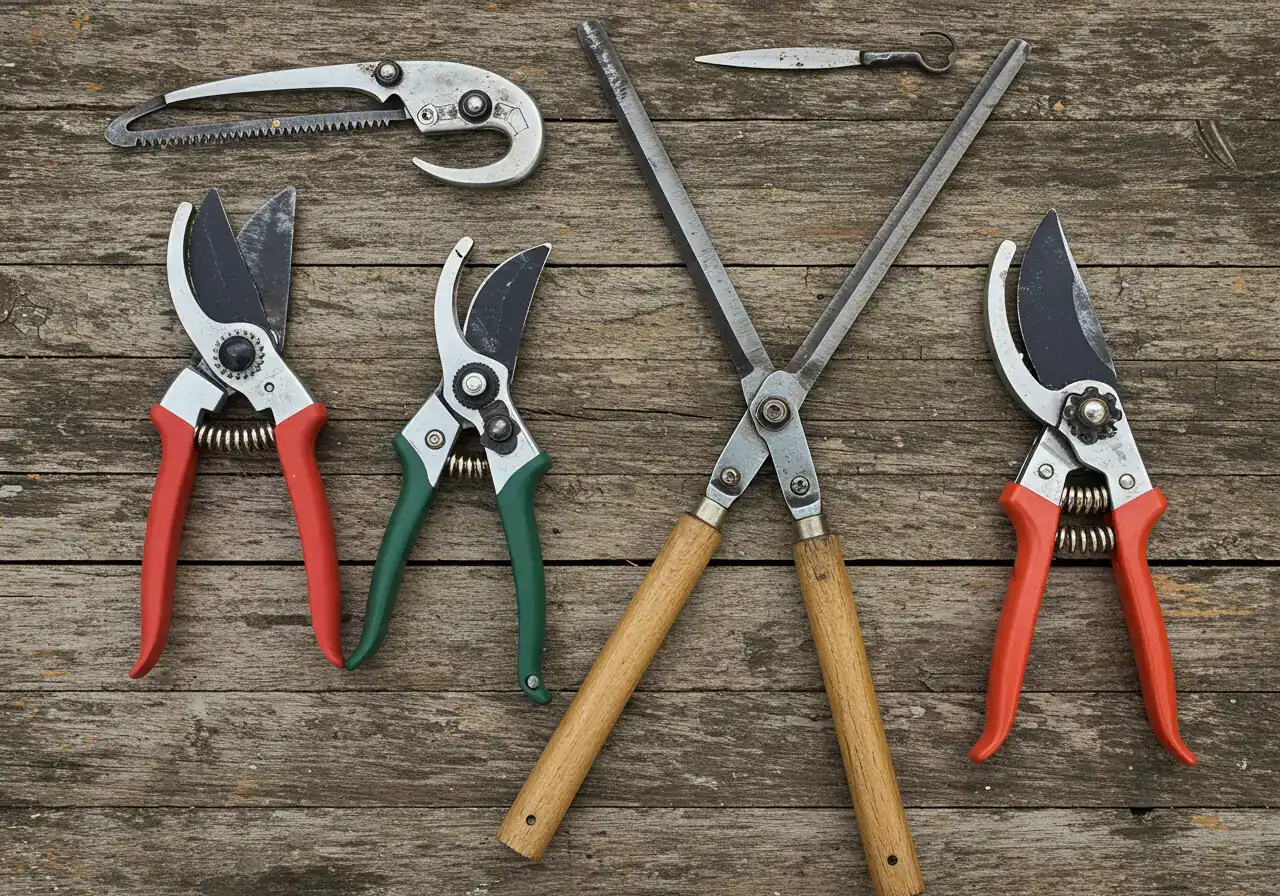
Your Summer Pruning Toolkit & Safety First!
Before you make the first cut, let’s gear up. Having the right tools makes the job easier and safer, and results in cleaner cuts for your plants.
- Hand Pruners (Secateurs): Your go-to for most tasks! Perfect for deadheading flowers and cutting smaller stems (usually up to ½ inch thick). Bypass pruners (where blades sweep past each other like scissors) make the cleanest cuts.
- Loppers: Like hand pruners but with long handles for extra leverage. Use these for branches thicker than your thumb (up to about 1.5 inches).
- Pruning Saw: For the big stuff! Branches over 1.5 inches thick require a saw. Choose one designed for pruning, with sharp teeth that cut on the pull stroke.
- Gloves: Protect your hands from thorns and blisters. Essential!
- Safety Glasses: You only get one pair of eyes! Protect them from flying twigs and debris.
Tool Hygiene is Key! Seriously, clean your tools. Wipe blades with rubbing alcohol or a disinfectant wipe between plants, especially if you suspect disease. This prevents spreading problems around your landscape. Sharp tools are also crucial – dull blades crush stems, leaving ragged wounds vulnerable to pests and disease.
Getting the right tools is a great start, and knowing how to use them correctly can truly elevate your garden’s look. You can see the beautiful results of dedicated care in our gallery of amazing garden transformations.
Simple Summer Snips: Two Common Tasks
Let’s tackle two easy but impactful summer pruning jobs:
-
Deadheading: Keep Those Flowers Coming!
- What it is: Removing faded or dead flowers from plants.
- Why do it: Encourages many plants (like Petunias, Roses, Coneflowers) to produce more blooms instead of putting energy into seed production. It also keeps things looking tidy!
- How to do it: For single flowers on stems (like Zinnias or Daylilies), snip the stem just below the spent flower head, cutting back to a healthy leaf node or bud. For plants with clusters of flowers (like Salvia or Lavender), wait until most flowers on a stalk are faded, then snip the entire stalk back to the main part of the plant or just above a fresh set of leaves. Easy peasy! Regular garden maintenance often includes this task.
-
Removing Suckers and Water Sprouts: Energy Zappers Be Gone!
- What they are: Suckers are vigorous shoots that grow from the roots or base of a plant (common on Lilacs or Crabapples). Water sprouts are similar fast-growing, often vertical shoots that appear on trunks or branches (especially on fruit trees).
- Why remove them: They steal energy from the main plant, often don’t flower or fruit well, and can ruin the plant’s shape.
- How to do it: Cut them off as close to the source as possible, right where they emerge from the root, trunk, or main branch. Use hand pruners for small ones, loppers for thicker ones. Be persistent; they often try to grow back!
Pruning Vigor and Your Ottawa Soil
How much should you prune? Observe your plants! Growth rates can vary even within Ottawa. For instance, if you’re gardening in parts of Manotick with richer, well-drained soil, you might find shrubs grow very enthusiastically and need slightly more frequent or assertive pruning to keep their shape compared to plants in heavy clay. Adjust your technique based on how vigorously your plants are growing.
Dealing with a lot of thorny branches or thick stems? Sometimes pruning generates more green waste than you expect. Remember that this is often part of a bigger garden refresh. We handle everything from careful trimming to complete professional Ottawa property cleanup services, taking the hassle out of disposal. And if removing a very overgrown shrub leaves a gap, maybe it’s time to think about fresh turf? Our expert Ottawa sod installation services can create that perfect lawn edge.
Considering professional help for a larger pruning project, like tackling a mature tree or a long hedge? We believe in clear communication right from the start – you can even see feedback on our estimating process from other Ottawa homeowners. Still have questions or unsure where to start with a specific plant? Feel free to get in touch with Clean Yards – we’re passionate about plants and happy to share our knowledge!
The Summer Pruning Hit List (and Who to Leave Alone!)
Okay, let’s figure out which plants are begging for a summer trim and which ones would rather you just leave them be until the cooler weather returns. It can feel a bit confusing, right? Like trying to decide who gets invited to the summer BBQ and who stays home. Don’t worry, we’ll sort through your Ottawa garden guests!
The Summer Pruning Hit List (Give ’em a Trim!)
These plants generally respond well to, or even benefit from, some careful summer snipping:
- Spring-Flowering Shrubs (Post-Show): Think Lilacs, Forsythia, Weigela, Mockorange. Their big flower show happens on branches grown last year. Once the flowers fade (usually by early June), prune them to shape and control size. If you wait too long, you’ll snip off next year’s flower buds!
- Many Summer-Flowering Shrubs: Plants like Potentilla, some Spireas (the ones that bloom later), and Roses often benefit from deadheading (removing spent blooms) to encourage more flowers. Light shaping is usually okay too, helping keep them tidy without sacrificing future blooms *this* season.
- Hedges (Deciduous & Evergreen): Cedar, Privet, and other hedges need shaping during the growing season to keep them neat and dense. Give them a good trim in early summer (June/July) and maybe a very light touch-up in early August if needed. Well-maintained hedges are common sights adding privacy and structure to yards in areas like Osgoode and Kars. Just don’t shear evergreens too hard back into old wood. If pruning leaves a mess, remember comprehensive cleanup is part of the job – similar to our dedicated Metcalfe property cleanup service, we handle the debris.
- Most Perennials (Deadheading): Keep snipping off spent flowers on plants like Coneflowers, Bee Balm, Daylilies, etc., to encourage re-blooming and keep things looking fresh.
- Fruit Trees (Lightly): Removing water sprouts (those fast, upright shoots) and doing very light thinning on apples and pears after fruit sets can improve air circulation and sun exposure for ripening fruit. Avoid heavy cuts.
- Suckers & Water Sprouts: Anytime you see these energy-sappers popping up from roots or branches, snip ’em off close to the source!
Sometimes, after removing an unruly shrub that just didn’t work, you might consider a replacement. Making the right choice is key, which involves careful plant and landscaping material selection for our Ottawa climate.
Hands Off! Who to Leave Alone in Summer
These plants are best pruned during their dormant season (late winter/early spring) unless you’re just removing dead or damaged wood:
- Oak & Elm Trees: Major No-No! Pruning these in summer significantly increases the risk of deadly Oak Wilt or Dutch Elm Disease, spread by insects attracted to fresh cuts. Protect these valuable giants!
- Maple Trees: While not usually dangerous, maples tend to “bleed” a lot of sap when pruned heavily during the growing season. It’s messy and stresses the tree unnecessarily. Stick to dormant pruning for significant work.
- Birch Trees: Similar to maples, birches can bleed heavily. They are also susceptible to bronze birch borer, and pruning stress during the growing season can make them more vulnerable.
- Shrubs That Bloom on New Wood (Mostly): Things like Hydrangea paniculata (‘Limelight’, ‘Pinky Winky’) or Potentilla actually bloom on the current season’s growth. While light shaping or deadheading is fine, avoid major pruning in summer as you might reduce flowering potential. Check your specific variety!
- Anything Stressed: If a plant is struggling with drought, heat stress, pests, or disease, avoid pruning unless you’re removing the afflicted part. Pruning adds another layer of stress.
Important Note: Every garden and plant is a little different. These are general guidelines for common gardening situations in Ottawa. If you’re dealing with a very old, large, or problematic tree or shrub, or if you’re just not sure, it’s always best to consult a professional. Tackling a big pruning job incorrectly can damage or even kill a plant. If you’d like an expert eye on your situation, it’s easy to book an estimate with Clean Yards. Understanding the scope of work and agreements is important when hiring help; you can view our standard Clean Yards Terms and Conditions for clarity on our service process. Sometimes, significant pruning and reshaping around lawn areas highlights issues with the turf itself; if that happens, our team also provides expert Ottawa sod installation services to complete the picture.
Green Pruning: Eco-Friendly Practices for Ottawa Gardeners
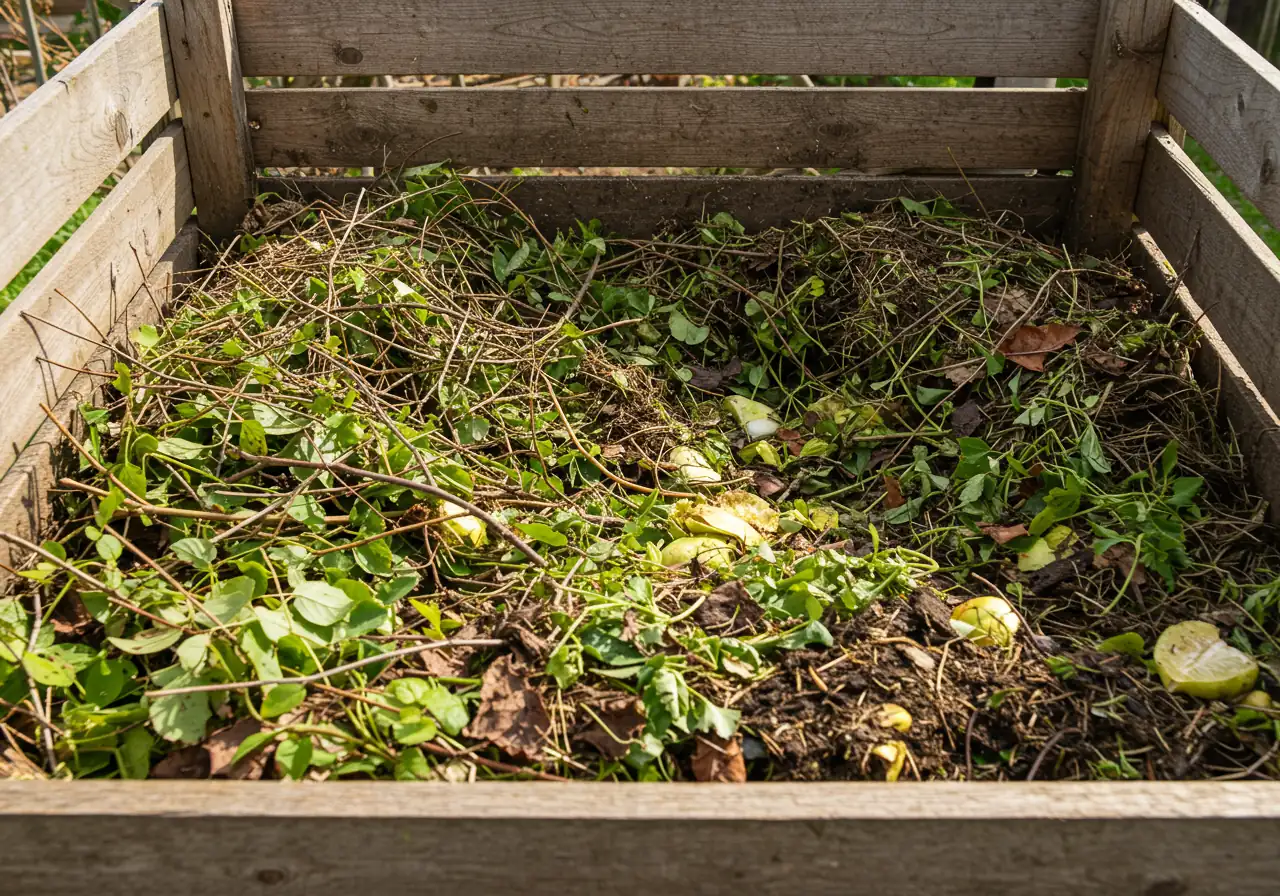
Alright, fellow Ottawa green thumbs, let’s chat about pruning with Mother Earth in mind! Sure, trimming keeps plants looking sharp, but how we prune and what we do with the leftovers can make a big difference for our local environment. Think of it as giving your garden and the planet a little TLC. Luckily, being an eco-friendly pruner is easier than wrestling a rogue raspberry cane (we’ve all been there!).
Dealing with the Debris: Compost vs. Green Bin
So, you’ve made your cuts. Now what? Instead of bagging everything for the curb (though Ottawa’s Green Bin program is a great option!), consider the goldmine you’re holding: future compost!
- Home Composting Power: Small twigs, leaves, and soft green stems are fantastic additions to your home compost bin. Chop them up a bit to help them break down faster. Mix them with your kitchen scraps (the “greens”) and some “browns” (like dried leaves or shredded cardboard), and voilà – you’re making nutrient-rich food for your garden beds. This reduces waste hauling and gives you free fertilizer! For insights on balancing compost ingredients, think about the broader concept of selecting the right landscaping materials for your garden’s needs.
- Ottawa’s Green Bin: For thicker branches (check City of Ottawa guidelines for size limits), diseased plant material (definitely don’t compost this at home!), or if you simply have too much volume, the Green Bin is your friend. It ensures the organic matter is processed properly instead of ending up in a landfill. Many communities, perhaps like Russell or Embrun where folks appreciate their green spaces, make great use of these programs. You can learn more about responsible stewardship from organizations like the Rideau Valley Conservation Authority.
- Too Much Trimmings? If you’ve undertaken a major pruning project and have more branches and debris than your bin or compost pile can handle, professional help ensures responsible disposal. Services like a dedicated Marionville yard cleanup service or a broader property clean up can manage large volumes efficiently.
Sanitation: Stopping Trouble Before It Starts
Remember how we talked about cleaning your tools? This isn’t just good for your plants; it’s eco-friendly too! By disinfecting your pruners between plants, especially if you cut out diseased wood, you prevent the spread of fungal spores or bacteria. This reduces the need for potentially harmful chemical sprays later on – a win for your garden and the local ecosystem.
Wildlife Considerations
Before you start snipping away, take a quick peek! Are there any active bird nests tucked into that shrub? Mid-summer is prime nesting season for many species. If you find a nest, try to prune around it or postpone trimming that specific plant until the baby birds have flown the coop. Your local birds will thank you!
Water Wise Pruning
Healthy, well-pruned plants are often more efficient water users. Removing dead or diseased parts means the plant isn’t wasting resources trying to support them. Plus, thinning dense growth improves air circulation, reducing the likelihood of fungal diseases that thrive in damp conditions. You can enhance water conservation further by applying a layer of organic mulch (maybe even from your own composted prunings!) around your plants after tidying up. Proper mulching and edging helps soil retain moisture, meaning less watering for you.
Sometimes, aggressive pruning is needed to remove a plant that just isn’t thriving or has become invasive. This might open up space for considering a new feature, perhaps even a whole new garden installation using native, water-wise plants better suited to our Ottawa climate.
Making these small, green choices during your summer pruning routine adds up, helping keep our Ottawa landscapes beautiful and environmentally healthy! Check out our about us page to learn more about our commitment to quality service.
Typical Summer Pruning Needs
FAQs: Your Ottawa & Vernon Summer Pruning Conundrums Solved
Got questions about snipping and clipping during Ottawa’s warmer months? You’re not alone! Summer pruning can feel a bit different than spring clean-up. Here are answers to some common head-scratchers for gardening folks in Vernon, Greely, Winchester, and beyond.
Ah! I found little critters munching on my shrub while pruning! What now?
Eek! First, identify the pest if you can. Often, simply pruning off the infested leaves or stems and disposing of them away from your compost (Green Bin is good!) solves minor issues. Avoid harsh chemicals if possible. For widespread problems or tricky pests common in Ottawa gardening, you might need targeted treatment or professional removal, like what’s offered with a full Ottawa yard cleanup service. We also offer property cleanup in Marionville and yard cleanup in Metcalfe.
Yikes! That summer storm left my favourite Vernon shrub looking ragged. Should I prune it all back now?
Hold your horses… or shears! Prune away any clearly broken or dangling branches immediately for safety. But avoid drastic reshaping right after a storm. The plant is stressed! Give it time to recover, then assess its structure later. If the damage is extensive and creates a big mess, consider specialized help like a focused Marionville garden clean up service to handle the debris safely.
We’ve got that classic Ottawa clay soil here in Greely. Does that change how I should summer prune?
It can! Heavy clay soil impacts drainage and sometimes plant vigour. Plants might grow slower than in looser soil, meaning less aggressive pruning might be needed to maintain size. Observe your plant’s growth rate. Good gardening also involves improving soil structure over time – check out tips on better soil preparation for healthier root systems, which supports recovery after pruning. Also, consider .
It’s scorching hot in Ottawa! Can I still prune my slightly wilted looking bushes?
Best to wait if you can! Pruning adds stress, and plants are already working overtime during intense heat and drought. Focus only on removing truly dead or diseased parts if necessary. Otherwise, let them focus on survival. Waiting until cooler weather returns is often the best approach – your plants will practically give you a polite thank you for your patience!
Whoops… I think I got a bit *too* enthusiastic with the shears. Can I fix my over-pruned shrub?
Deep breaths! It happens. Don’t fertilize heavily right away, as this can stress it further. Just ensure it gets consistent watering, especially during dry spells. Most hardy gardening plants will recover, though it might take a season or two to look full again. Give it time and patience before declaring it a lost cause.
My hedge is huge / I’m scared I’ll hurt the tree / I have no time! When should I call for professional pruning help in the Winchester area?
Call in the pros if pruning requires tall ladders, involves large trees (especially near wires or structures), or if you’re unsure how or when to prune specific plants. Pros have the right equipment, safety training, and landscaping knowledge. If time is tight or the job feels overwhelming, expert help like a comprehensive Ottawa yard cleanup service ensures it’s done right, saving you hassle. Check out our services page for more details or easily book an estimate online.
Quick Reference: Summer Pruning Candidates
| Plant Type | Summer Pruning Action | Best Timing | Notes |
|---|---|---|---|
| Spring-Flowering Shrubs (Lilac, Forsythia) | Shape, reduce size | Immediately after flowering (June) | Avoid cutting off next year’s buds |
| Summer-Flowering Shrubs (Potentilla, Spirea) | Deadhead, light shaping | Mid-Summer (June-July) | Encourages rebloom, maintains tidiness |
| Hedges (Cedar, Privet) | Shape, maintain density | Early Summer (June/July), Light trim Early Aug | Avoid cutting into old wood on evergreens |
| Perennials (Coneflower, Salvia) | Deadhead spent flowers | Continuously through summer | Promotes more blooms |
| Fruit Trees (Apple, Pear) | Remove water sprouts, light thinning | Mid-Summer (after fruit set) | Improves sun exposure, air flow. Avoid heavy cuts. |
| Oak, Elm Trees | AVOID (unless dead/dangerous wood) | Dormant Season (Winter) | High risk of disease if pruned in summer |
| Maple, Birch Trees | AVOID major pruning | Dormant Season (Winter) | Tend to bleed sap heavily in summer |
Conclusion: Shape Up Your Summer Garden in Vernon and Beyond!
Whew! So, we’ve journeyed through the whys, whens, and hows of summer pruning. It’s clear this isn’t just about making things look neat (though that’s a nice perk!). Giving your shrubs and trees a strategic summer snip is a fantastic way to boost their health, manage their sometimes wild enthusiasm for growth, and even encourage more flowers or fruit. Think of it as giving your landscape a mid-season spa day – essential for keeping things vibrant and improving that all-important curb appeal, whether you’re gardening in Vernon, tending a yard in Kenmore, or enjoying the green spaces of Metcalfe.
Getting comfortable with those shears means you can tackle dead branches, tame unruly growth, and keep diseases at bay, ensuring your piece of the beautiful Ottawa region looks its best all season long. Don’t let your plants look like they missed their salon appointment! Whether it’s a specific Vernon garden clean up or ongoing care, proper pruning makes a difference.
Feeling ready to shape things up but maybe a bit hesitant about where to start, or facing a pruning task that feels more like wrestling a leafy monster?
- Give us a call! We’re happy to chat about your specific gardening needs and offer professional advice or expert pruning services. Let our team handle the tricky bits! Find our details on the contact us page.
Want to browse our services, learn more tips, or get a hassle-free online quote?
- Head over to CleanYards.ca! Explore our resources and easily book an estimate right from your computer or phone.
Taking that little bit of extra care with summer pruning really pays off. Here’s to a healthy, happy, and beautifully shaped garden for you to enjoy this Ottawa summer!

